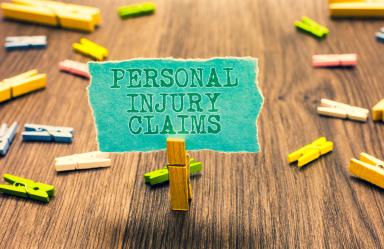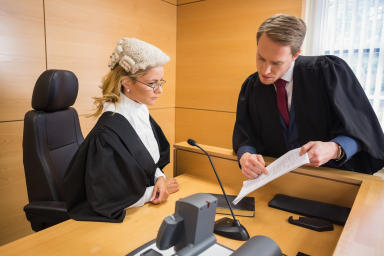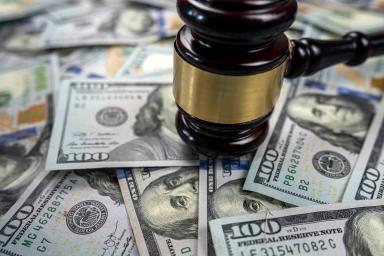California Personal Injury Laws

California personal injury laws provide the legal framework for imposing liability for injuries caused by the careless, reckless, or intentional acts or omissions of others. Understanding these laws and your rights is essential if you have been injured and are considering legal action.
Most personal injury claims in California are based on the legal concept of negligence. Negligence occurs when there is a failure to exercise reasonable care to prevent harm, and harm is caused. When determining the outcome of a personal injury case, jurors consider the reasonable actions of an individual in similar circumstances.
Here are some key California personal injury laws that may impact your claim.
California’s Dram Shop Law
Dram shop law refers to the liability held by places that sell alcohol, in the event that an inebriated patron causes property damage or injury due to their intoxication. For example, if a bar fails to stop serving a clearly-inebriated person who goes on to cause property damage or injury to a third party, the bar may be partially liable for damages.
In California, the scope of the law is limited. In most cases, liability for causing injury while intoxicated lies solely with the person consuming the alcohol, not with the vendor. The state makes exceptions for minors in situations where:
A parent, guardian, or another adult knowingly serves alcohol to a person under 21 years of age or should have known the individual was underage
An employee of an establishment with a license to serve alcohol provides it to an “obviously intoxicated minor”
Dram shop claims allow victims to seek compensation for:
Current and future medical bills related to the injury
Property damage repair or replacement costs
Lost income caused by missing work while you recover
Diminished earning capacity if you suffer a permanent impairment that impacts the level of income you can earn
Physical pain and suffering
Emotional distress and mental anguish
Loss of enjoyment of life
Scarring and disfigurement
The specifics, scope, and limitations of California’s dram shop law (also known as social host law) can be found in the California Civil Code Section 1714.
California’s Dog Bite Law
California is a ‘strict liability’ state, meaning dog owners are held liable for all dog bites, even a first offense. This rule differs from the ‘one bite rule’ common to many states, whereby owners are protected from injury liability the first time their dog bites someone.
According to the California Civil Code Section 3342, dog owners are liable for any damages incurred as a result of a dog bite occurring in public or on private property where the victim has the lawful right to be. Liability extends to all dog bites, no matter how minor. Bites that don’t break the skin qualify for a claim.
Exceptions to strict liability may apply to dog owners who can show that:
The victim was trespassing
The dog was a law enforcement animal
The victim was partially at fault
The victim has assumed the risk of getting bitten, such as in the case of veterinarians or kennel owners
Trespassers can still pursue a claim if they can show the owner was negligent or knew the dog was dangerous. Dog bites from law enforcement animals may still fall under strict liability if the victim was an innocent bystander who did not provoke or annoy the dog.
Medical Malpractice in CA
Under California law, medical malpractice occurs when a professional healthcare provider deviates from the appropriate standard of care during the course of treating a patient.
‘Standard of care’ describes the accepted practices and procedures that a reasonable healthcare practitioner in the same field would apply under similar circumstances. The breach of care must cause injury to the claimant. Common examples include:
Making a mistake during surgery
Misdiagnosing or failure to diagnose
Prescribing the wrong medication or dosage
The state imposes certain requirements on plaintiffs intending to file a medical malpractice complaint, such as notifying their doctor at least 90 days before filing. The notification must provide the following:
The claim's legal basis
The type of damages sustained
The nature of the injuries
If the plaintiff serves this notice fewer than 90 days before the expiration of the statute of limitations (see below), the plaintiff may be granted another 90 days to initiate the lawsuit.
California places a cap on claims for non-economic damages in medical malpractice suits. Recent legislation has increased the cap for non-economic damages according to a tiered structure (see ‘How Much Can Someone Sue for an Injury in California’ below).
California’s Premises Liability Laws
Premises liability law codifies the liability of property owners for any injuries or other damages occurring on their property. Claims must demonstrate that the property owner knew about a hazardous condition but did nothing to remedy it. Premises liability claims are commonly brought after accidents occurring on business’ properties, such as grocery stores and construction sites.
Premises liability lawsuits are founded on the legal principle of negligence, which requires property owners to exercise ‘reasonable care’ to keep their property safe and prevent others from injury.
California’s premises laws are covered by Civil Code 1714(a). Claims require factual evidence demonstrating that harm arose as a result of the accused’s negligent property management. The claim must prove that:
The property was owned, occupied, leased, or controlled by the accused
The accused party was negligent in the maintenance or use of the property
The claimant was injured
The accused party’s negligence was a substantial contributor to the injury
When determining whether or not a property owner has breached their duty of care, courts can consider a variety of factors, including:
Seriousness of injury
Likelihood of injury occurring as described by the victim
Location of property
Property owner’s degree of control over hazardous conditions
Products Liability Laws
California products liability law holds the designer, manufacturer, or seller of a defective product strictly liable for any injuries caused by the product, even when the company or individual was not negligent.
Plaintiffs pursuing a product liability claim must establish that:
The product was defective when it was designed, manufactured, or produced
The product was defective at the time it was sold
The defect caused injury to the claimant
The claimant used the product in a ‘reasonably foreseeable’ way
Unlike other states, California operates a strict liability rule, meaning the claimant is not required to prove negligence on the part of the seller or manufacturer. They only need to confirm that the product’s defect caused their injury.
Jurors determine whether or not a product was used in a ‘reasonably foreseeable’ way based on how the average consumer will use (or misuse) a product.
In California, strict liability applies to the following types of defects:
Manufacturing defects: a defect is attributed to the manufacturing process
Design defects: a defect is attributed to the design
Warning defects: a product carries insufficient or erroneous warnings
California Business Liability Insurance Requirements
Commercial General Liability (CGL) insurance is the standard liability policy businesses use. While CGL is not mandatory for California businesses, it is strongly recommended. Most businesses prefer to be insured against liability risks.
A comprehensive CGL policy includes three types of primary coverage: premises liability, product liability, and completed operations.
Premises liability covers accidental injury or property damage resulting from conditions on the business premises or during the course of operations, whether on or off premises
Products liability protects businesses that manufacture, sell, handle, or distribute products from injury or damage caused by those products
Completed operations cover potential liability for injury or damage arising from a business’ completed work
Exclusions under a CGL policy typically include the following:
Intentional injury
Liquor liability
Workers Compensation
Pollution
Aircraft/automobile/watercraft
Mobile equipment
This is not an exhaustive list. Coverage exclusions vary widely between policies, so it’s essential to read and understand all exclusions within a specific policy. The type of business will determine how a CGL policy is classified and its exclusions.
The workers’ compensation exclusion is of particular importance. California employers are required under California Labor Code Section 3700 to provide workers comp from a licensed insurance company or through the State Compensation Insurance Fund (State Fund).
How Much Can Someone Sue for an Injury in California?
For the most part, California places no damage caps on personal injury claims. The exception is medical malpractice, which caps compensation for non-economic damages such as pain and suffering, loss of consortium, and loss of enjoyment of life.
Passed in 2022, Assembly Bill 35 caps non-economic damages in medical malpractice claims at $350,000 for non-death cases and $500,000 for wrongful death cases. The caps will increase incrementally until 2033, maxing out at $750,000 for non-death cases and $1 million for wrongful death cases. The new caps apply only to cases filed on or after January 1, 2023. Cases filed before that date are subject to the old cap of $250,000.
The cap has no bearing on potential economic losses such as medical costs, lost income, and loss of earning ability.
The Statute of Limitations in California
The statute of limitations is the time limit within which a claimant must file a lawsuit after suffering harm. California’s statute of limitations for most personal injury claims is two years.
According to Sections 335.1 and 340 of California’s Code of Civil Procedure, a civil injury victim must file a claim within two years of sustaining the injury. A ‘discovery of harm’ rule provides an exception for situations where the injured party did not learn of their injury or were unable to determine the extent of their injuries until later. In such cases, the statute of limitations starts from the moment the victim discovers their injury.
There is an exception for situations when the plaintiff did not learn about the harm until later. This is called the “discovery of harm” rule. It applies when the personal injury victim is not able to determine the extent of their injuries caused by an accident until later on.
Legal Resources for Injured Folks in California
We’ve compiled a list of links to the most helpful resources for personal injury claims in California, including civil codes, government advice on insurance and the law, and key statistics relating to injury and wrongful death.
California Civil Code Section 1714
The statutory basis for negligence-based personal injury claims in California, the code obligates citizens to be responsible for willful acts resulting in injury to another.
https://leginfo.legislature.ca.gov/faces/codes_displaySection.xhtml?sectionNum=1714.&lawCode=CIV
California Department of Insurance
A government guide to commercial insurance that includes information on commercial general liability policies.
Statute of Limitations
This is the code of civil procedure relating to California’s statute of limitations for personal injury claims as set out in California Civil Code Sections 335.1 & 340.
https://leginfo.legislature.ca.gov/faces/codes_displaySection.xhtml?lawCode=CCP§ionNum=335.1
https://leginfo.legislature.ca.gov/faces/codes_displaySection.xhtml?lawCode=CCP§ionNum=340
California Assembly Bill 35
Information on recent changes to caps placed on medical malpractice claims as set out in Assembly Bill 35.
https://leginfo.legislature.ca.gov/faces/billStatusClient.xhtml?bill_id=202120220AB35
Personal Injury Court Statistics
The Judicial Council of California’s 2022 Court Statistics Report. This report lists the total number of cases filed and a rough breakdown of case types, including personal injury. It also includes links to court reports dating back to 1989.
https://www.courts.ca.gov/13421.htm
Preventable Death Statistics
The statistics provide information on preventable injury-related fatality data by state of occurrence, including California.
Expertise.com StaffAuthor
Step into the world of Expertise.com, your go-to hub for credible insights. We don't take accuracy lightly around here. Our squad of expert reviewers, each a maestro in their field, has given the green light to every single article you'll find. From rigorous fact-checking to meticulous evaluations of service providers, we've got it all covered. So feel free to dive in and explore. The information you'll uncover has been stamped with the seal of approval by our top-notch experts.




